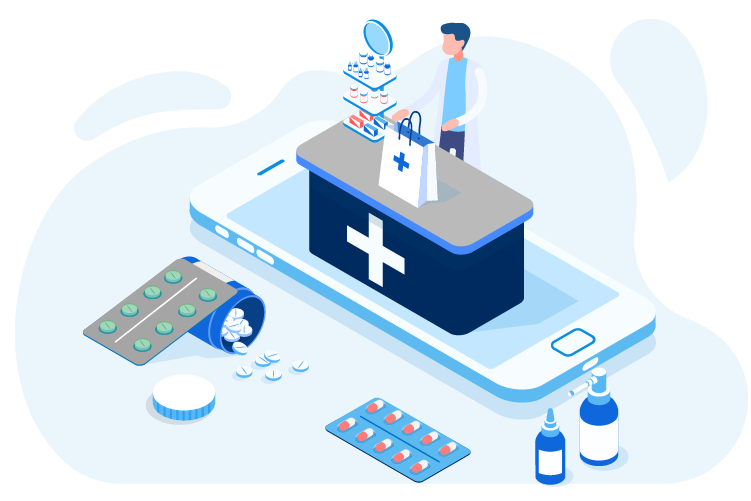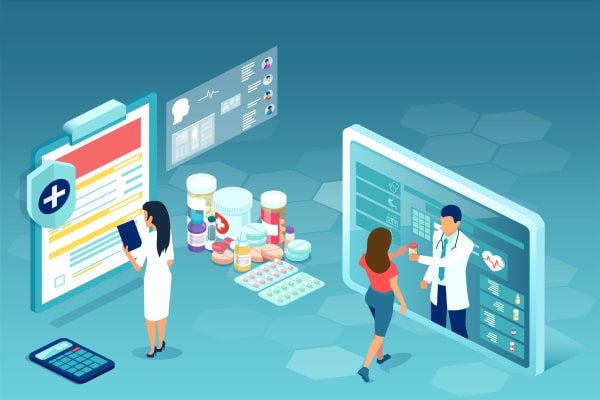Pbms Links For Students – A Comprehensive Guide!
Pharmacy Benefit Management Systems (PBMS) play a crucial role in the healthcare industry, acting as intermediaries between pharmacies, healthcare providers, and insurance companies.
PBMS, or Pharmacy Benefit Management Systems, are third-party entities managing prescription drug benefits, including claims processing and formulary management.
This comprehensive guide aims to provide students with insights into PBMS links, their functionalities, challenges, and future trends.
Table of Contents:
Defining PBMS – Discover The Facts Now!
PBMS are sophisticated entities that oversee various aspects of prescription drug benefits, including:

- Claims Processing: PBMS handles the processing of prescription drug claims, ensuring accuracy and adherence to coverage guidelines.
- Formulary Management: They maintain formularies and lists of prescription drugs covered by a specific insurance plan and determine which medications are included and at what cost-sharing level.
- Network Contracting: PBMS negotiates contracts with pharmacies to establish networks where plan beneficiaries can access prescription medications at agreed-upon rates.
The evolution of PBMS has been marked by significant growth and consolidation, with a few key players dominating the market.
PBMS interacts with multiple stakeholders, including insurers, pharmacies, healthcare providers, employers, and patients, to facilitate seamless prescription drug benefits administration.
Importance of PBMS Education For Students – Get Access Right Now!
Incorporating PBMS education into pharmacy curricula is essential for preparing future pharmacists and healthcare administrators to navigate the complexities of the healthcare landscape. Students gain insights into:
- The intricacies of drug pricing, reimbursement mechanisms, and insurance coverage.
- Real-world challenges include prior authorizations, formulary restrictions, and therapeutic interchange programs.
- Strategies for optimizing medication therapy outcomes while managing costs and ensuring patient access to essential medications.
By fostering an understanding of PBMS, educational institutions equip students with the knowledge and skills needed to advocate for patients, collaborate with healthcare teams, and adapt to evolving healthcare policies and regulations.
Read Also: Brianne Aron – Explore An Inspiring Journey!
Exploring Pbms Links – Get The Details You Need!
Accessing PBMS resources and links is crucial for students seeking to deepen their understanding of PBMS operations and industry trends. Various avenues for exploration include:

- Official Websites: Major PBMS providers maintain comprehensive websites offering information on their services, products, and industry insights.
- Academic Resources: Students can access scholarly articles, research papers, and textbooks covering PBMS topics through academic databases and library resources.
- Professional Networks: Joining professional associations and online forums provides opportunities to engage with industry experts, share knowledge, and stay updated on PBMS developments.
By actively exploring PBMS links, students gain valuable insights that complement their formal education and prepare them for future roles in pharmacy practice, healthcare management, or related fields.
Functionalities And Features of PBMS Links – How They Work!
PBMS links offer a plethora of functionalities and features designed to facilitate efficient prescription drug benefits administration:
- Interface Navigation: PBMS interfaces are designed to be user-friendly, allowing users to navigate various functionalities seamlessly.
- Prescription Processing: PBMS links facilitate prescription claims processing, enabling pharmacists and healthcare providers to submit claims electronically and receive real-time adjudication responses.
- Formulary Information: PBMS portals provide access to formulary databases, enabling users to search for covered medications, check coverage criteria, and identify preferred drug options.
- Reporting and Analytics: PBMS links offer reporting and analytics tools that allow stakeholders to monitor utilization trends, track medication adherence, and assess the effectiveness of cost-saving initiatives.
Read Also: Clearway Law – An Ultimate Guide In 2024!
Challenges In PBMS Utilization – Access The Details Effortlessly!
Despite their benefits, PBMS face several challenges that impact their utilization and effectiveness:

- Interface Complexity: PBMS interfaces may be complex and challenging to navigate, particularly for users with limited technical proficiency.
- Privacy and Security Concerns: Handling sensitive patient data raises privacy and security concerns, necessitating robust data protection measures and compliance with healthcare regulations.
- Pricing Transparency: Lack of transparency in drug pricing and rebate negotiations can hinder efforts to control medication costs and ensure patient affordability.
- Regulatory Compliance: PBMS must adhere to stringent regulatory requirements, including healthcare laws such as HIPAA (Health Insurance Portability and Accountability Act), which govern handling protected health information.
Addressing these challenges requires collaboration among stakeholders, investment in technological infrastructure, and a commitment to transparency and accountability in PBMS operations.
Read Also: Dukagjin Lipa – Uncover The Story Behind The Name!
Future Trends In Pbms – Stay On Top Of The Latest Solutions!
The future of PBMS is shaped by emerging trends and innovations that hold the potential to transform the delivery of prescription drug benefits:
- Artificial Intelligence (AI) and Machine Learning: PBMS increasingly leverages AI and machine learning algorithms to analyze data, predict medication adherence, and identify cost savings and quality improvement opportunities.
- Blockchain Technology: Blockchain technology offers secure, immutable record-keeping capabilities that enhance data integrity, streamline transaction processing, and facilitate interoperability among disparate healthcare systems.
- Telehealth and Digital Prescriptions: Integrating telehealth services and digital prescription platforms within PBMS frameworks enables remote patient consultations, electronic prescribing, and medication delivery, enhancing access to care and medication adherence.
- Value-Based Care Models: PBMS is shifting towards value-based care models, prioritizing outcomes and patient satisfaction over traditional fee-for-service arrangements. These models incentivize providers to deliver high-quality, cost-effective care and promote population health management initiatives to improve health outcomes and reduce healthcare costs.
By adopting these trends, PBMS can spark innovation, enhance patient results, and nurture a healthcare system centered on sustainability and patients’ needs.
Educational Resources And Opportunities – Find Out What’s Available Today!
Students interested in PBMS can avail themselves of various educational resources and opportunities to deepen their understanding and enhance their skills:

- Online Courses and Webinars: Numerous online courses and webinars cover PBMS fundamentals, industry trends, and practical applications, offering students flexibility and accessibility in their learning journey.
- Internship Programs: Programs with PBMS providers, healthcare organizations, or managed care companies provide hands-on experience and exposure to real-world PBMS operations, allowing students to apply classroom knowledge professionally.
- Research Collaborations: Collaborating with academic institutions and industry partners on research projects allows students to contribute to the body of knowledge in PBMS and gain valuable research experience.
- Professional Certifications: Pursuing professional certifications in PBMS administration and management demonstrates proficiency and expertise in the field, enhancing students’ credibility and marketability in the job market.
Using these educational resources and opportunities, students can learn more, gain valuable skills, and prepare for success in the changing field of PBMS.
FAQs:
1. Why is PBMS education necessary for students?
PBMS education equips students with essential knowledge of drug pricing, reimbursement mechanisms, and insurance coverage, preparing them for pharmacy practice and healthcare management roles.
2. How can students access PBMS resources for learning?
Students can access PBMS resources through the official websites of major providers, academic databases, journals, and professional associations, gaining insights into industry trends and operations.
3. What can you do with PBMS links?
With PBMS links, you can access important information and perform various tasks related to PBMS systems, such as tracking orders or managing inventory.
4. When it comes to using PBMS, what difficulties do people face?
People may encounter challenges such as system complexity and data accuracy issues when utilizing PBMS. Additionally, PBMS links can help students understand the complexities of the PBMS system and gain valuable insight into how it works.
Conclusion:
PBMS, short for Pharmacy Benefit Management Systems, are external organizations responsible for overseeing prescription drug benefits, encompassing claims processing and formulary management tasks.
Read Also:






